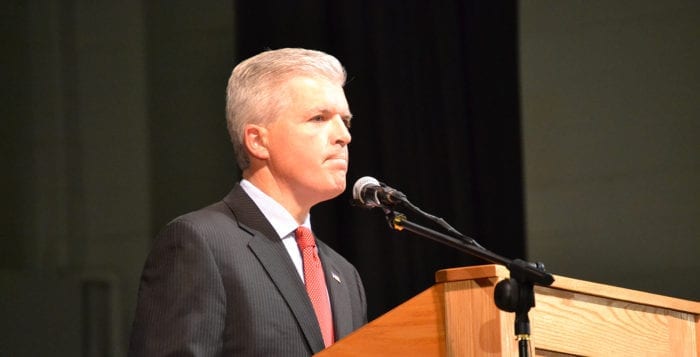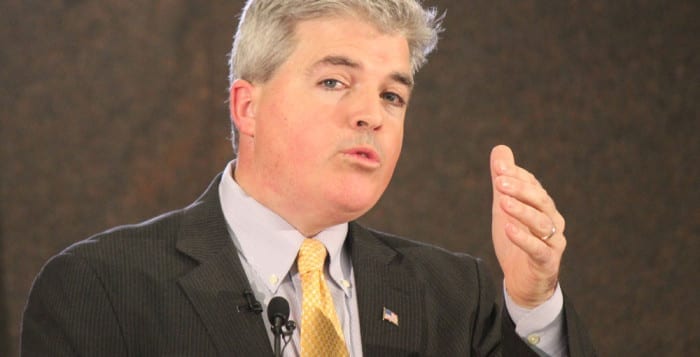Suffolk County Executive Steve Bellone (D) admitted in his 2018 State of the County address last week that our county, our home, remains a constant work in progress. We couldn’t agree more. There needs to be action taken to push for more concrete progress now, instead of just talking about the potential Suffolk has.
Many of the quality-of-life issues addressed by Bellone are no surprise to Long Islanders. The high cost of living and economic stress it creates, need for affordable housing, improvements to public transportation to reduce traffic, and tackling our county’s narcotic drug abuse and gang violence are daily issues we struggle with. And these aren’t new problems.
Bellone first recognized that “young people have been leaving our region at record rates for 20 years in search of opportunity and in search of a place to live other than their parents basements” in his 2012 State of the County address. Enrollment in most of the county’s school districts is dwindling as families are moving off Long Island to pursue their version of the American Dream.
The true question is how much progress has been made toward meeting housing demands, creating opportunities for better-paying jobs, improving the Long Island Rail Road and other public transportation while addressing crime in the last six years?
A Connect Long Island master plan to construct new transit-oriented housing centers was presented by Bellone in 2015. While we’ve seen ground broken on Port Jefferson’s Uptown Funk project, key plans like the Ronkonkoma hub, Huntington Station’s revitalization, Heartland Town Square in Brentwood off Commack Road and other promised projects are either just getting underway or largely still lofty ideals sketched on paper.
Residents have spoken out against many of these planned housing developments in rallies at town halls and roadway intersections. Location is key, and we are tired of seeing open green space slated for development when there’s plenty of vacant storefronts and zombie houses in residential areas.
Let’s not forget the affordable aspect. Recently opened housing projects in Huntington Station are quoting a rent of more than $2,300 a month for a one-bedroom apartment, when the median income for Suffolk workers is about $41,000 a year, according to the U.S. Census 2012-2016 American Community Survey. That’s not far off from apartment costs in parts of New York City, which don’t require a commute.
Electrification of the LIRR’s eastern tracks – including the Huntington to Port Jefferson stretch – has been talked about by the county since 2015. As of this April, town leaders including Brookhaven Town Supervisor Ed Romaine (R), Smithtown Supervisor Ed Wehrheim (R) and Town of Huntington Supervisor Chad Lupinacci (R) are still writing letters to state and county officials begging for a feasibility study to be started. As for the promise of a rapid transit bus system, a reliable system has still not materialized while many of the line stops have been closed.
High-paying jobs that offer opportunity for future growth, reasonably priced housing and solutions to roadway gridlock need to be put into place to make Suffolk County’s future bright, as Bellone first promised when taking office.
We are willing to commend what appears to be progress in reducing narcotic drug abuse and gang violence, as early crime stats for 2018 are trending in the right direction. But we must remain vigilant.






